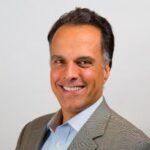Advice for Employers and Recruiters
Lessons learned from an expert in pre employment assessment
Recruiters at large organizations constantly struggle with the challenge of hiring a high volume of candidates who have the excellent quality they need to drive business forward. Pre employment assessment is one tool that employers have at their disposal to balance the need for speed and quality. We interviewed Dr. Marc Wenzel, who is VP of Business Development and Strategy at Shaker, developer of the Virtual Job Tryout. He had deep insight into how assessment, if done right, can apply more rigor to the hiring process, resulting in better hires in less time.
Wenzel will be presenting at the 11th annual College Recruiting Bootcamp on December 15, 2017, held at Intuit headquarters near San Francisco. Co-organized by College Recruiter and Shaker, this event is targeted to university relations, talent acquisition, and other human resource leaders. (More below.)
What is wrong with the way employers typically recruit and hire candidates?
Marc Wenzel: The way most large employers recruit these days makes it extremely difficult to balance speed with quality. Balancing the need for speed with the need to include valid predictors of job fit and performance—that’s a huge challenge. Also, employers often fail to incorporate standard metrics and a science-based process into their relationship-oriented hiring process. For example, recruiters struggle with how much to trust objective evaluation versus their own personal judgement of the candidate. Overall, there is simply a lack of feedback loops that would allow employers to consistently evaluate the quality of their hiring decisions.
What is the importance of pre employment assessment in quantifying the selection process?
 MW: A well thought out assessment process, including interviewing, requires employers to apply more rigor to their hiring. That rigor increases their understanding the key competencies of the job opening and to collect job relevant data. It also helps them demonstrate ongoing business impact in three areas: 1) increasing staffing efficiency 2) reducing early career turnover and 3) improving the quality of hire. A well thought out assessment program will also evaluate in an ongoing way the assessment’s lack of adverse impact. Finally, it can also focus hiring efforts on actual job-related skills, while minimizing the influence of non-job related characteristics.
MW: A well thought out assessment process, including interviewing, requires employers to apply more rigor to their hiring. That rigor increases their understanding the key competencies of the job opening and to collect job relevant data. It also helps them demonstrate ongoing business impact in three areas: 1) increasing staffing efficiency 2) reducing early career turnover and 3) improving the quality of hire. A well thought out assessment program will also evaluate in an ongoing way the assessment’s lack of adverse impact. Finally, it can also focus hiring efforts on actual job-related skills, while minimizing the influence of non-job related characteristics.
What mistakes do employers make when using pre employment assessment?
MW: Implementing assessments is not a quick and simple solution. Employers need to become savvy about many aspects. It requires a fairly deep understanding of validity, adverse impact, understanding what kind of assessment tools can be used and what is available in the field, understanding how to use the results consistently and in a valid way, making adjustments when the nature of the job changes, etc. The mistakes I see are:
- Picking the wrong assessment for the job
- Failing to understand the basic concepts of validity and ongoing business impact evaluation
- Failing to listen to the end users of the data (e.g., not using something that is easily interpreted or understood)
- Assuming that candidate drop out is always bad
- Not appreciating the ongoing change management needed, and not aligning/integrating the assessments to all the other hiring steps.
- Assuming that profiling a handful of high performers will shape a “success profile” to hire against. Employers usually don’t have a large enough sample. Additionally, it is important to understand the performance of average and low performers on the assessment as well so you can differentiate the two.
What trends are you seeing in how employers use assessment?
 MW: About 25% of companies that responded to the 2016 Candidate Experience Award survey are not using assessment as part of their hiring process. Of those using assessment, about 22% are doing so without any in-house validation. One trend I am seeing, however, is more recognition that good assessment can complement a recruiter’s judgment. That is, it’s not about one or the other, but both. Employers are seeing assessment as a way to reduce cognitive bias, too. Finally, more employers are making efforts to make their candidate processes more engaging, for example by using gamification in their assessment, and inviting a two-way information exchange with candidates.
MW: About 25% of companies that responded to the 2016 Candidate Experience Award survey are not using assessment as part of their hiring process. Of those using assessment, about 22% are doing so without any in-house validation. One trend I am seeing, however, is more recognition that good assessment can complement a recruiter’s judgment. That is, it’s not about one or the other, but both. Employers are seeing assessment as a way to reduce cognitive bias, too. Finally, more employers are making efforts to make their candidate processes more engaging, for example by using gamification in their assessment, and inviting a two-way information exchange with candidates.
About the upcoming College Recruiting Bootcamp
Friday, December 15, 2017, 9:30 – 2:30 pm PST
Intuit Headquarters, 2600 Casey Ave Bldg 9
Mountain View, CA 94039-1296
This event is for organizations who hire talent from colleges and universities. Many employers’ university recruiting plans center on visiting the same campuses year after year, interviewing the same kinds of students year after year. If this sounds familiar, and you are hoping that you’ll see huge improvement year after year, you’re far from alone.
This is our 11th College Recruiting Bootcamp where we gather university relations, talent acquisition, and other human resource leaders from corporate, non-profit, and government organizations. You will learn from others how to enhance your program so that you’ll stop losing the talent that your organization needs not just to survive but also to thrive. The event will be a highly interactive, collegial, and informative day of learning. Be sure to bring something to write on because you’re going to be feverishly writing notes about strategies and tactics which are being used today by your competitors.
The night before the event, we will hold a reception with cocktails and appetizers.
 About Marc Wenzel: Marc is VP of Business Development and Strategy at Shaker, developer of the Virtual Job Tryout.
About Marc Wenzel: Marc is VP of Business Development and Strategy at Shaker, developer of the Virtual Job Tryout.
He is and has been a Software as a Service Sales and Strategy leader with a successful business track record in HR Technology companies. With deep experience developing enterprise solutions for Fortune 100 companies, he effectively develops and deploys human capital solutions to meet clients’ business goals. He also works with Private Equity portfolio companies experiencing significant growth, re-organization, and re-alignment.